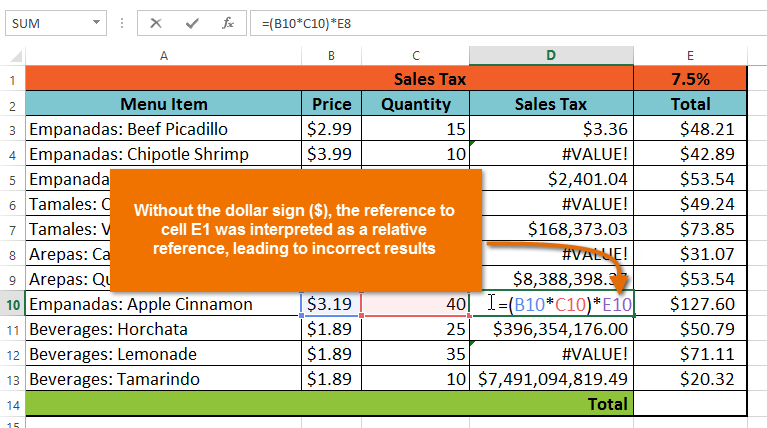Introduction
There are two types of cell references: relative and absolute. Relative and absolute references behave differently when copied and filled to other cells. Relative references change when a formula is copied to another cell. Absolute references, on the other hand, remain constant, no matter where they are copied.
Relative references
By default, all cell references are relative references. When copied across multiple cells, they change based on the relative position of rows and columns. For example, if you copy the formula =A1+B1 from row 1 to row 2, the formula will become =A2+B2. Relative references are especially convenient whenever you need to repeat the same calculation across multiple rows or columns.
To create and copy a formula using relative references:
In the following example, we want to create a formula that will multiply each item’s price by the quantity. Instead of creating a new formula for each row, we can create a single formula in cell D2 and then copy it to the other rows. We’ll use relative references so the formula correctly calculates the total for each item.
- Select the cell that will contain the formula. In our example, we’ll select cell D2.
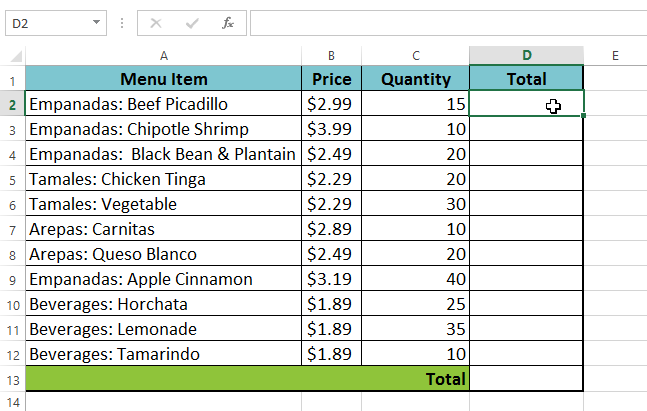
- Enter the formula to calculate the desired value. In our example, we’ll type =B2*C2.
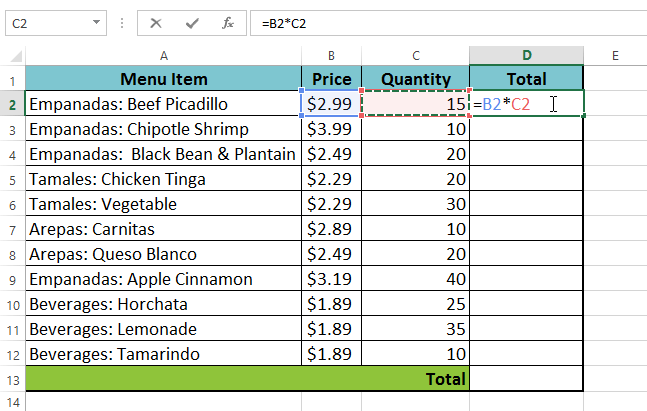
- Press Enter on your keyboard. The formula will be calculated, and the result will be displayed in the cell.
- Locate the fill handle in the bottom-right corner of the desired cell. In our example, we’ll locate the fill handle for cell D2.
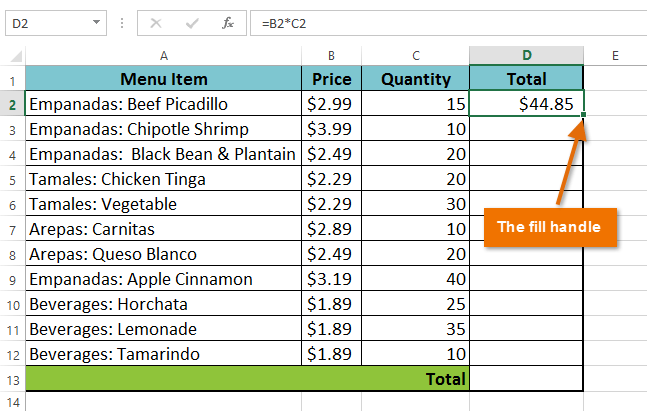
- Click, hold, and drag the fill handle over the cells you want to fill. In our example, we’ll select cells D3:D12.
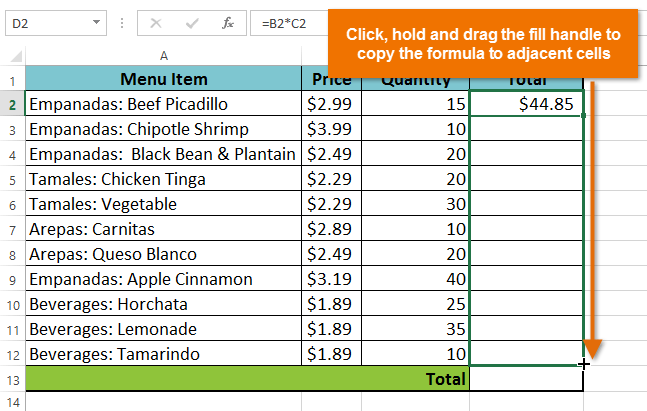
- Release the mouse. The formula will be copied to the selected cells with relative references, and the values will be calculated in each cell.
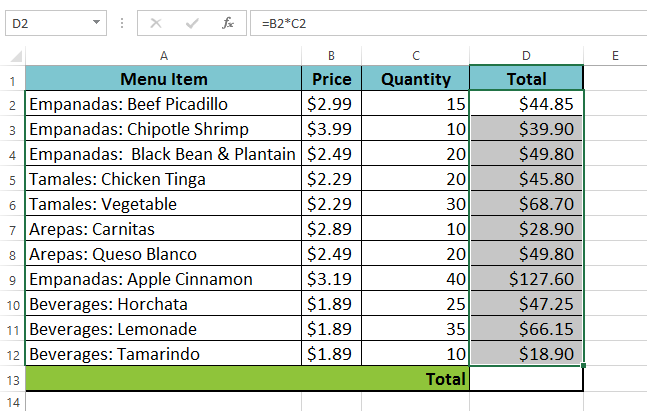
You can double-click the filled cells to check their formulas for accuracy. The relative cell references should be different for each cell, depending on their rows.
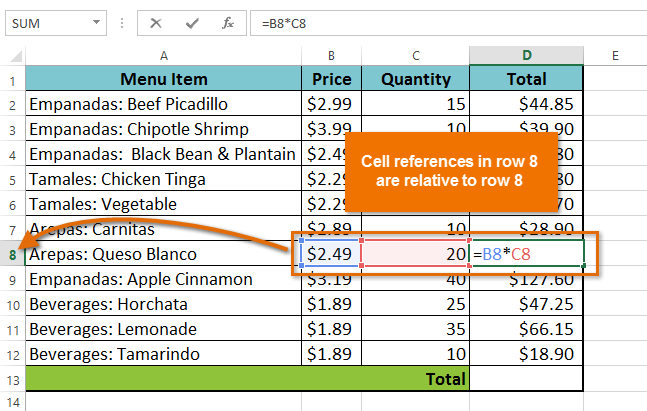
Absolute references
There may be times when you do not want a cell reference to change when filling cells. Unlike relative references,absolute references do not change when copied or filled. You can use an absolute reference to keep a row and/or column constant.
An absolute reference is designated in a formula by the addition of a dollar sign ($). It can precede the column reference, the row reference, or both.

You will generally use the $A$2 format when creating formulas that contain absolute references. The other two formats are used much less frequently.
To create and copy a formula using absolute references:
In our example, we’ll use the 7.5% sales tax rate in cell E1 to calculate the sales tax for all items in column D. We’ll need to use the absolute cell reference $E$1 in our formula. Because each formula is using the same tax rate, we want that reference to remain constant when the formula is copied and filled to other cells in column D.
- Select the cell that will contain the formula. In our example, we’ll select cell D3.
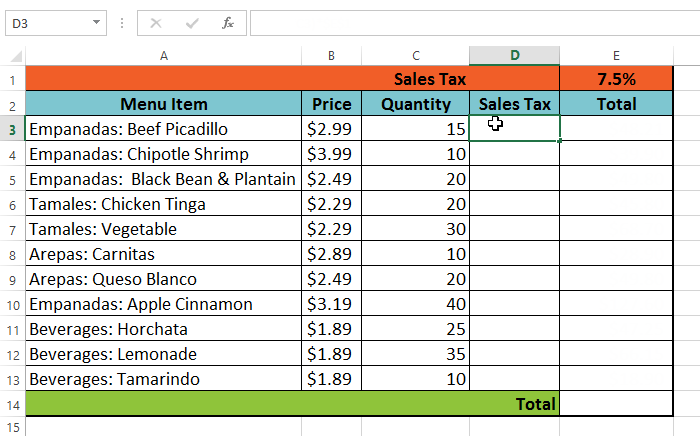
- Enter the formula to calculate the desired value. In our example, we’ll type =(B3*C3)*$E$1.
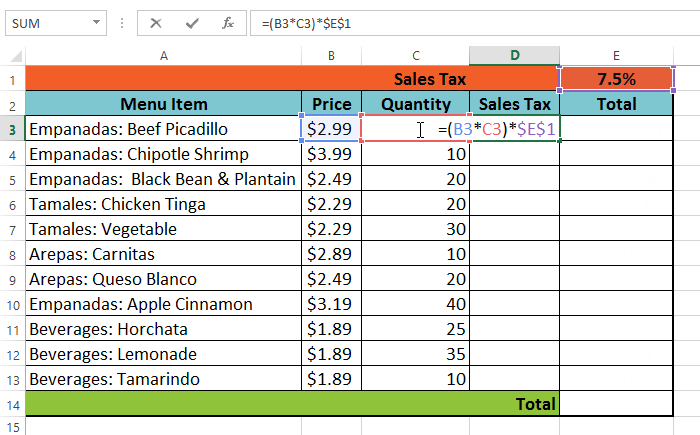
- Press Enter on your keyboard. The formula will calculate, and the result will display in the cell.
- Locate the fill handle in the bottom-right corner of the desired cell. In our example, we’ll locate the fill handle for cell D3.
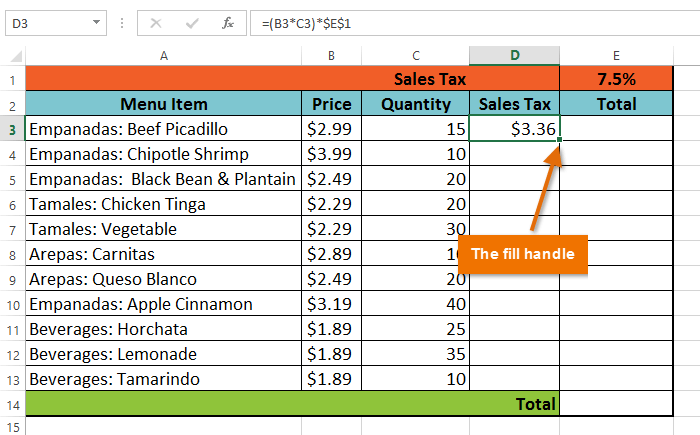
- Click, hold, and drag the fill handle over the cells you want to fill: cells D4:D13 in our example.
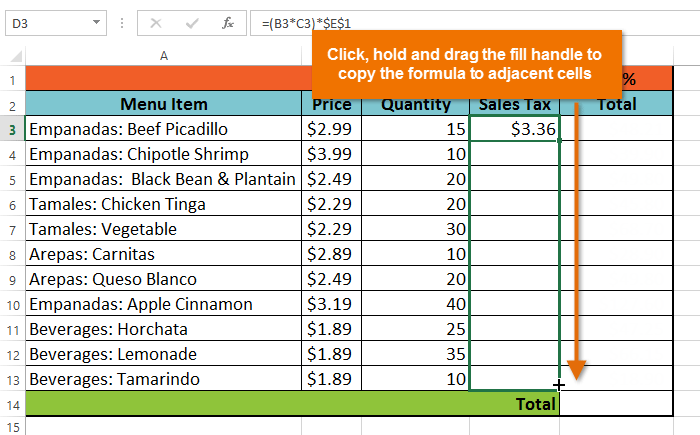
- Release the mouse. The formula will be copied to the selected cells with an absolute reference, and the values will be calculated in each cell.
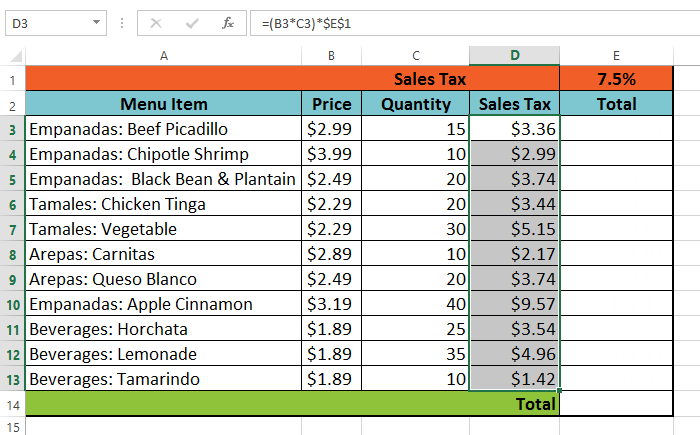
You can double-click the filled cells to check their formulas for accuracy. The absolute reference should be the same for each cell, while the other references are relative to the cell’s row.
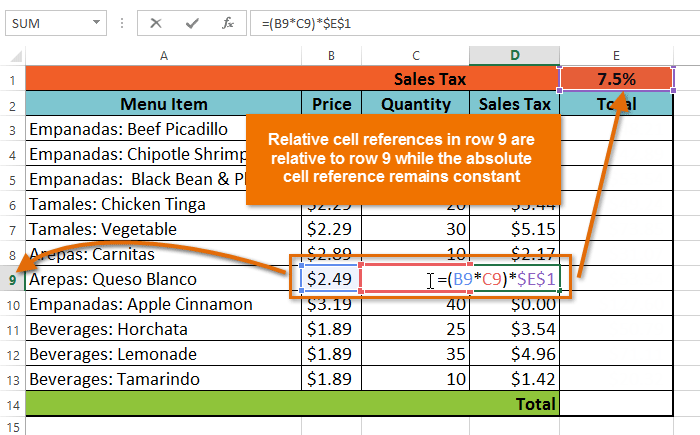
Be sure to include the dollar sign ($) whenever you’re making an absolute reference across multiple cells. The dollar signs were omitted in the example below. This caused Excel to interpret it as a relative reference, producing an incorrect result when copied to other cells.
